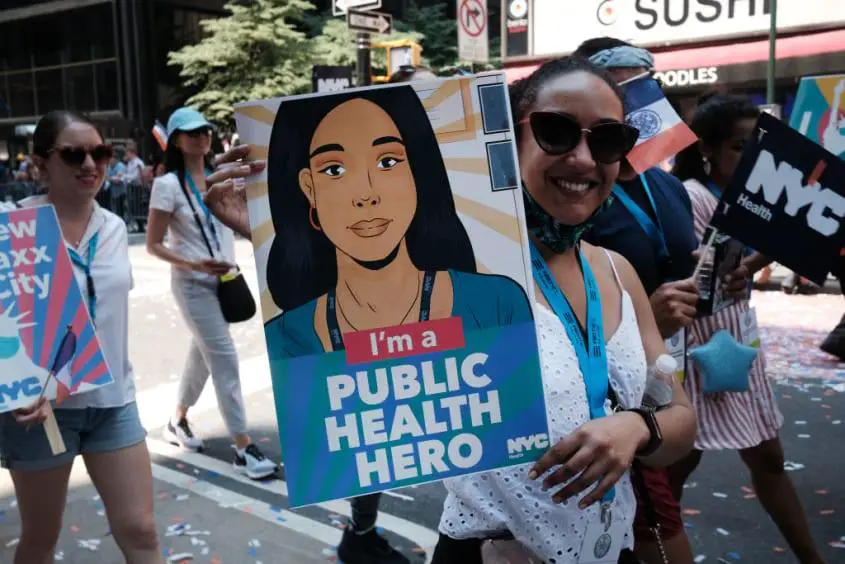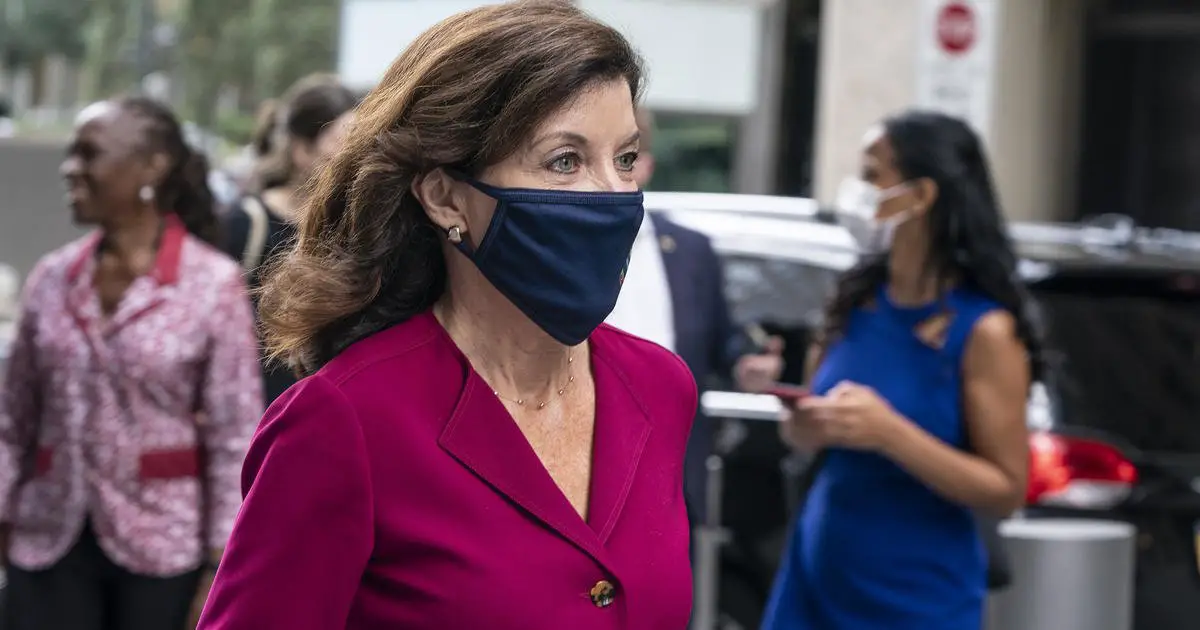Can I Keep My Doctor When Im Picking Out My New Exchange Plan
Doctors are associated with NY Health Insurance plans. If a doctor belongs to Oxford and a person joins an Oxford plan on the exchange, then they should be able to see that same doctor.
Dont forget, you also have the option of grandfathering in your plan if the plan existed before March 23, 2010, when the Affordable Care Act was signed into law.
Many of the health insurance companies in NY are now selling health insurance plans both on and off the NY state of health exchange, marketing to both individuals and small businesses
What Is The Individual Mandate
The health insurance marketplacesestablished by the AffordableCare Act provide coverage to 11.41 million consumers, according to anApril 2020 report from the Centers for Medicare & Medicaid Services .
Prior to 2020, if you went without Affordable Care Act compliant health insurance for more than two consecutive months, you would pay a penalty. This requirement was commonly known as the Obamacare individual mandate. The purpose of the penalty was to encourage everyone to purchase health insurance if they werent covered through their employment or a government-sponsored program. According to Kaiser Health News, the federal ACA penalty for going without health insurance in 2018 was $695 per uninsured adult or 2.5% of your income, whichever amount was higher.
In response to concerns about the affordability of marketplace ACA plans, congress passed the Tax Cuts and Jobs Act at the end of 2017. The law reduced the individual penalty of the Obamacare individual mandate to zero dollars, starting in 2019. Now that the individual mandate tax penalty has been removed, there is not a tax penalty at the federal level.
The History Of Health Insurance In New York State
New York State has one of the countrys most progressive health insurance systems. Since 1990, New York State residents have enjoyed the benefits of community rating and guaranteed issue. These two laws are key components of the Affordable Care Act that went into effect on March 23rd, 2010.
Respectively community rating and guaranteed issue mean insurance companies cannot charge people more based on their background or medical history, and deny health insurance coverage to anyone for any reason.
These two laws have expanded health insurance coverage to many New Yorkers since their introduction more than 20 years ago. However, these two policies have also contributed to higher health insurance costs in the state.
Before the Affordable Care Act being enacted and allowing these two laws to now become a right for Americans, some experts thought health insurance rates nationwide would increase. By some estimates, premiums were said to rise by as much as 30 percent, according to a study released by the Society of Actuaries.
In New York. however, it was thought that health insurance rates could fall by as much as 14 percent when the rest of the Care Act was to take effect, according to the same study.
Again, before the Affordable Care Act, states that already have community rating and/or guaranteed issue laws on the books like Maine, Vermont, Massachusetts, and New Jersey thought theyd also see the same cost declining effect.
Read Also: Is It Required For Employers To Offer Health Insurance
Medicare For New York Seniors And Younger Adults With Disabilities
Medicare is a federal health insurance program generally for people 65 and older. But younger adults with disabilities and certain illnesses also qualify.
New York has the fourth-highest number of Medicare recipients in the country. More than 3.6 million residents enrolled as of 2018.
Roughly 6 in 10 enrollees have Original Medicare from the federal government. The rest have private Medicare Advantage plans. Both options provide Part A hospital and Part B medical insurance. But Medicare Advantage offers extra benefits, such as Part D prescription drug coverage.
Private companies also sell individual Part D drug plans, which are often paired with Original Medicare. Nearly 1.5 million New Yorkers have a separate Part D plan as of 2018.
Original Medicare enrollees can also add a Medicare Supplement plan, known as Medigap. New York, like most states, offers 10 standard Medigap plans. Policies help pay for covered out-of-pocket expenses, including copayments, coinsurance, and deductibles. Many policies also pay for qualified emergency care you receive in a foreign country.
What About People Who Work For Insurance Companies

Reducing our current bloated insurance bureaucracy will inevitably lead to some job loss. However, the adoption of a single-payer system is expected to lead to the creation of many new jobs in other industries throughout the state. Once employers are freed from the burden of buying private insurance for their workers, they will have much more money to invest in their business and hire more workers.
For those who currently work for private insurance companies, or in the billing department for providers, there is funding in the bill to support their transition to new employment. Some will transition to work in the new system, and others may take on roles for care coordination or healthcare delivery. The economic impact study performed in 2015 estimated that over 70% of the displaced workers will have new jobs within six months. By the end of the second year, over 99% of the displaced workers will have found new employment. While this may present individual challenges, advocates prioritize a just transition to meaningful and well-compensated work in the new system.
Recommended Reading: Where To Go To Apply For Health Insurance
No Mandatory Health Insurance: Advantages
The primary upside to health insurance no longer being mandatory at the federal level is the money you don’t have to spend on premiums that remains in your pocket.
“If you’re young and healthy, it’s possible to get by without paying a monthly bill for health insurance, which saves you money,” says Chane Steiner, CEO of Crediful, a personal finance website. That could be helpful if you’re trying to pay off student loans or save money toward a down payment on a home.
Of course, if your employer offers some type of health insurance coverage as part of your benefits package, you may be able to get affordable coverage anyway, without having to shop around for it.
Christina Nicholson, owner of Media Maven, opted to cancel her health insurance and pay out-of-pocket for pregnancy-related medical expenses that her plan didn’t cover. She first considered adding herself to her husband’s health insurance, but their premiums would have increased by over $1,000 per month so she opted to pay her own medical bills.
Fortunately, she was able to negotiate discounts from her hospitals and doctors, which ended up costing her significantly less money than she would have paid had she been covered. In one instance, the difference between the cost of medical tests with insurance was $1,900 more than her negotiated fee without insurance.
What Is New York Short Term Disability Insurance
If you are an employer in the state of New York, you are required to provide short term disability benefits to all your employees. New York is one of a handful of states that require this coverage. You can purchase this coverage directly from the Workers Compensation Board which oversees this program, or you can purchase coverage from a state approved insurance company.
You May Like: What’s The Penalty For Not Having Health Insurance In California
Doesnt The Aca Fix Health Care
The Affordable Care Act expanded healthcare to millions of people. But it left the private health insurance companies in charge. Many more health plans have narrow restricted provider networks, rising premiums, high deductibles and co-payments that shift a large part of the cost to the individual. They control which doctors or hospitals we can go to and what care they can provide. We pay for their high administrative costs and profits. Employers continue to shift more of the cost of coverage to their workers, or drop coverage entirely.
Financial Help With Marketplace Plans In New York
The federal government provides financial assistance based on your income and household size. You can receive help through premium tax credits, cost-sharing reductions, or both when you enroll through the Marketplace.
- Premium Tax Credits : This lowers your monthly premium on any metal plan. Before 2021, you qualified for help paying for health insurance if you earned between a certain range .In 2021, you qualify for subsidy help if you pay more than 8.5% of your household income on health insurance. In 2020, more than half of New York enrollees received subsidies.9 The average subsidy was $325.10
- Cost-Sharing Reductions : This lowers your out-of-pocket costs only on silver plans. You must earn up to 250% of the FPL to qualify, or $43,100 for a family of two. Just 12% of New York enrollees got CSRs in 2020.11
You May Like: Is Eye Surgery Covered By Health Insurance
Calculating Your Penalty Fees
For 2018 and earlier, you can calculate the the amount youll pay in penalty fees two different ways.
Youll pay whichever is higher. Using the percentage method, only the part of your household income thats above the yearly tax filing requirement is counted. Using the per person method, you pay only for people in your household who dont have insurance coverage.
If you have coverage for part of the year, the fee is 1/12 of the annual amount for each month you dont have coverage. If you do not have coverage for only 1 or 2 months, you dont have to pay the fee at all.
You can use the IRS penalty fee estimator to figure out how much you might owe from uncovered periods in 2018 and earlier.
Child Health Plus Program Enrollment By County And Insurer: Beginning 2009
The Child Health Plus enrollment and demographic data show the aggregate number of Child Health Plus Beneficiaries by eligibility year and month within each county and health plan. Child Health Plus is a government insurance program for eligible children through the month in which they turn nineteen, whose income and resources fall within program guidelines.
You May Like: How To Apply For Health Insurance As A College Student
When The Individual Mandate Changed
As mentioned above, mandated health insurance began in 2014, which also happened to be the year the Affordable Care Act went into effect. The question is, why was having health insurance mandatory so short lived? Was it that much of a failure?
The jury is still out on whether the individual mandate was successful or not, but there is one thing for certain. Requiring Americans to enroll in insurance coverage was the lifeline of Obamacare, something President Trump knew all too well.
When President Trump took office, he vowed to repeal the ACA. After a few unsuccessful attempts, he decided to go after the health insurance mandate, which he hoped would cause an unravelling of the healthcare system at the time.
On January 20, 2017, President Trump signed an executive order referred to as Obamacare Relief, which called for the end of the individual mandate as of 2019. In the immediate aftermath, health insurance premiums began to rise in anticipation of few Americans enrolling in insurance coverage.
Is Health Insurance Mandatory In 2020

As of January 1, 2019, health insurance is no longer mandatory at the federal level. However, there are still some states that require residents to enroll in medical coverage as of 2020. Those states include:
- California
- Vermont
- Washington DC
If you are a resident of any of the mentioned states, and you forego health coverage, you will face a tax penalty, unless you qualify for an exemption.Other states are planning on following suit in the coming years. Those states include Connecticut, Maryland, and Hawaii.
You May Like: How Much Do Health Insurance Agents Make
Finding The Best Health Insurance Coverage In New York
The best health insurance policy for your family will depend on the availability of plans in your area, as well as your medical and financial situation. When deciding on the right type of plan, you should determine affordability by reviewing the premiums and deductibles for each metal tier. Generally, if you have an emergency savings account and don’t expect to have significant health or medical expenses, then a lower metal tier plan with more affordable premiums would make more financial sense.
Gold and Platinum plans: Best if you expect high medical costs
Gold and Platinum plans are the highest tier health insurance policies available in New York. These plans often have the most expensive monthly premiums but come with lower deductibles and out-of-pocket maximums.
For example, if you frequently use expensive prescription drugs, an upper-tier health plan could be the right choice.
Silver plans: Best for people with low income or average medical costs
Silver plans are middle-ground policies that fall between Gold and Bronze plans with regard to premiums and out-of-pocket expenses. We would recommend a Silver plan in most situations â but if you are very healthy, Bronze may be best in terms of cost-effectiveness.
On the other hand, if you expect a lot of medical expenses, then a Gold plan may better fit your needs.
Bronze and Catastrophic plans: Best for young, healthy individuals
How To Calculate The Fee For Each Plan Year
The fee is calculated 2 different ways as a percentage of your yearly household income, and per person. Youll pay whichever is higher.
- Using the percentage method, only the part of your household income that’s above the yearly tax filing requirement is counted.
- Using the per person method, you pay only for people in your household who don’t have insurance coverage.
If you have coverage for part of the year, the fee is 1/12 of the annual amount for each month you don’t have coverage. If you’re uncovered only 1 or 2 months, you don’t have to pay the fee at all. Learn about the “short gap” exemption.
Fee amounts for 2017| Per person method |
|---|
Also Check: Do You Have Health Insurance
Search New York Codes
FindLaw Codes are provided courtesy of Thomson Reuters Westlaw, the industry-leading online legal research system. For more detailed codes research information, including annotations and citations, please visit Westlaw.
FindLaw Codes may not reflect the most recent version of the law in your jurisdiction. Please verify the status of the code you are researching with the state legislature or via Westlaw before relying on it for your legal needs.
Health Care Coverage Status : 2007
Behavioral Risk Factor Surveillance System sample data were used to generate annual percentages of non-institutionalized adult NYS residents with/without health insurance coverage. Health care coverage percentages are provided for 2007 to 2010, and are available for a range of demographic and geographic categories . BRFSS is a random digit dialing phone survey of the health status and health behaviors of adult NYS residents. The sample covers between 6,000 and 9,000 completed interviews annually through this timeframe. Data for 2011 forward are available at: https://health.data.ny.gov/Health/Health-Care-Coverage-Status-BRFSS-Beginning-2011/g5ce-hdeb
Read Also: Can You Get Health Insurance Immediately
What Is Medicaid
Medicaid is a federally subsidized health insurance program for low-income and disabled individuals who are not insured through their spouse or employer and cannot afford to purchase health insurance.
Each state runs its own Medicaid program, and the eligibility requirements differ from state to state. There is usually a minimum threshold of age and/or income.
What Kind Of Low
Low-income residents of New York may qualify for Medicaid. Residents whose incomes are too high for Medicaid but too low to afford individual insurance may qualify for an Essential Plan for adults or Child Health Plus for children. There arent any set enrollment periods for any of these programs, so you can apply anytime.
Recommended Reading: How Much Does Health Insurance Cost In Ct
Other Ways To Get Health Insurance In New York
Most New Yorkers who arent eligible for Medicare or Medicaid get health insurance through their employer. Employer-sponsored health insurance is usually the most affordable health insurance option, too.
However, besides an employer or the ACA marketplace, there are other ways to get health insurance coverage
- An individual health plan outside of the ACA marketplace. These plans provide additional options to ones found on the marketplace, but they arent eligible for subsidies. If you qualify for subsidies, you may stay with an ACA marketplace plan.
- Catastrophic health insurance is available to people under 30 and those eligible for a hardship exemption. Catastrophic health plans have low premiums and provide similar coverage found in a standard health plan. However, these plans also have high out-of-pocket costs. Catastrophic plans can have individual deductibles up to $8,550 in New York. Members have to pay that amount out of pocket for health care before the plan begins kicking in money to help pay for health care services. The plan picks up all costs once you reach that level. Find out more about catastrophic health plans in New York.
Still not sure about health insurance eligibility? Check out Insurance.coms Health Plan Findertool to explore your health insurance eligibility.
Insurance For Individuals In New York

Before searching for coverage, think about what kinds of medical services you need. All plans on New Yorks marketplace must include 10 essential health benefits to guarantee coverage for doctor visits, emergency care, hospital stays, prescription drugs, and more. Preventive care, such as routine screenings, is free. You can also find plans with additional benefits, such as adult vision and dental coverage.
Health insurance plans in New York generally have four major plan levels called metal tiers and include bronze, silver, gold, and platinum. The higher the tier, the higher your premium, but the lower your cost-sharing.
You May Like: Why Did My Health Insurance Go Down
